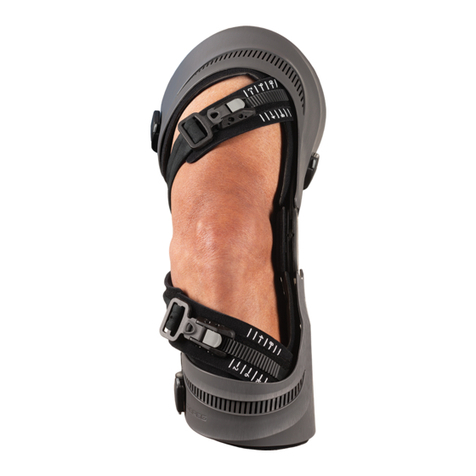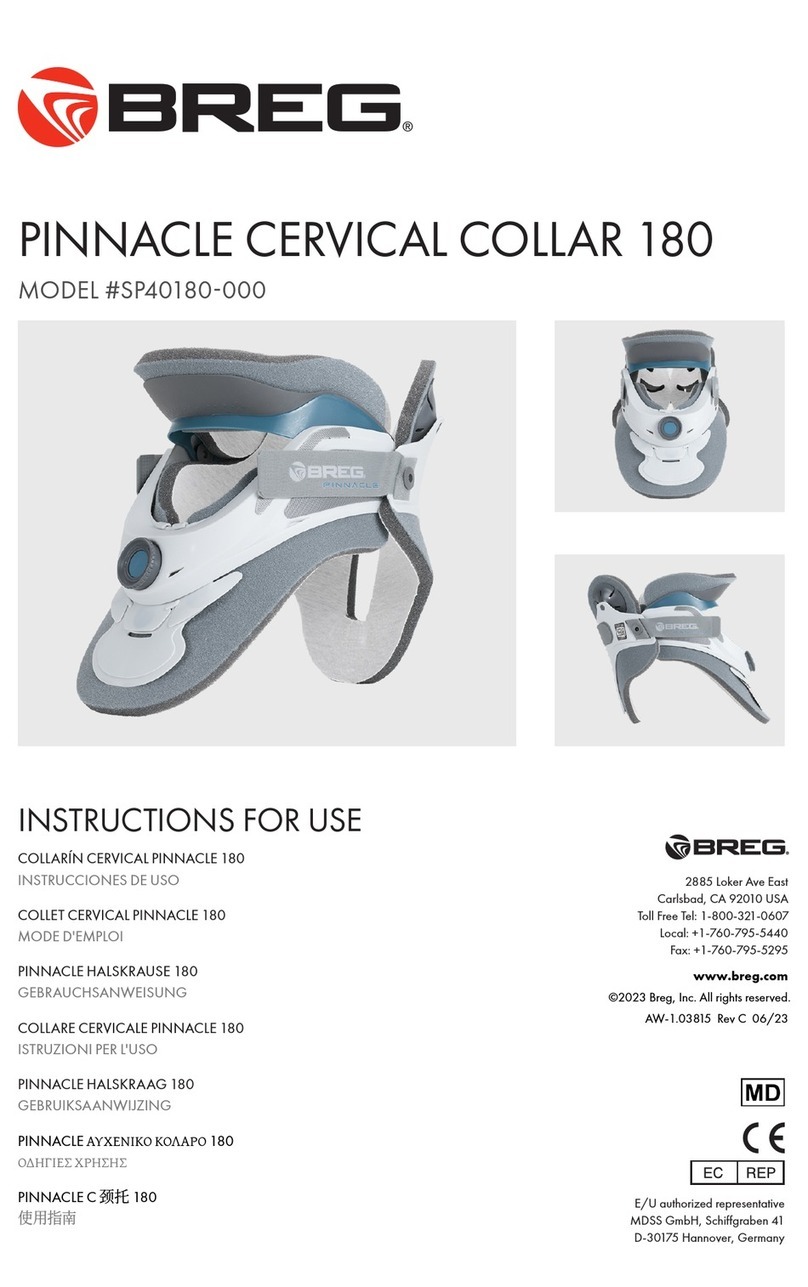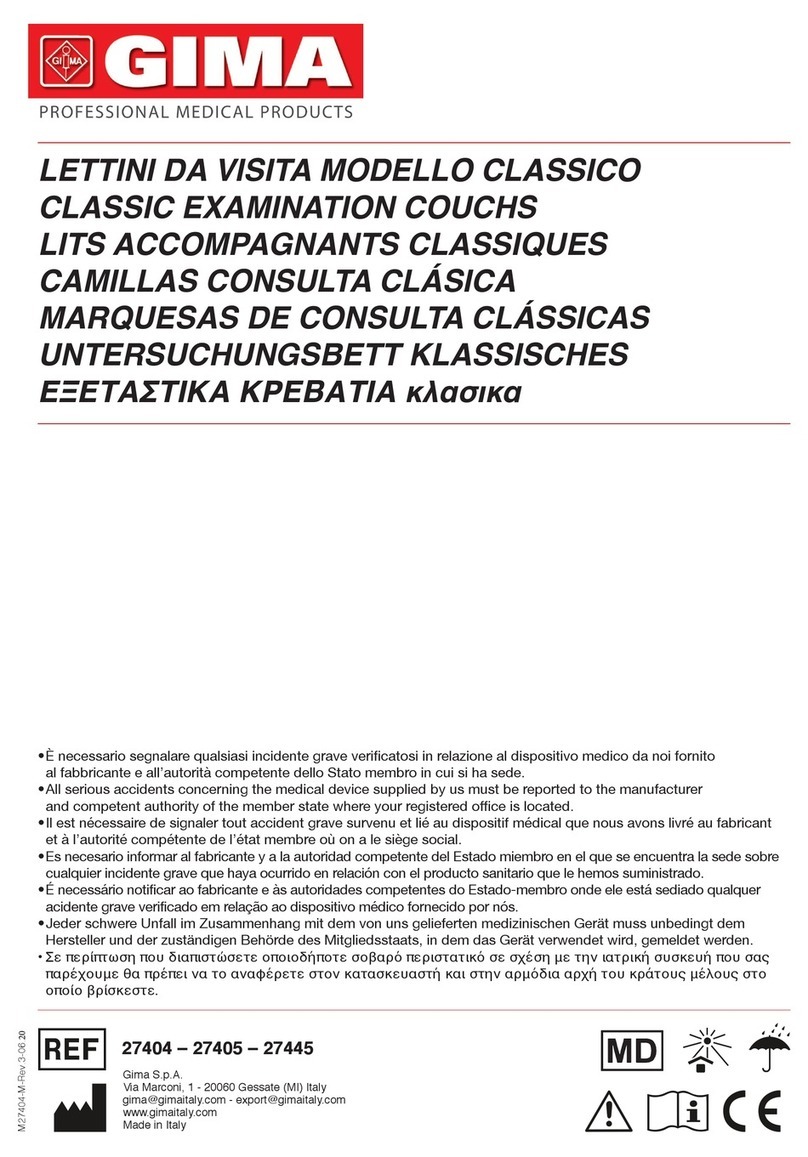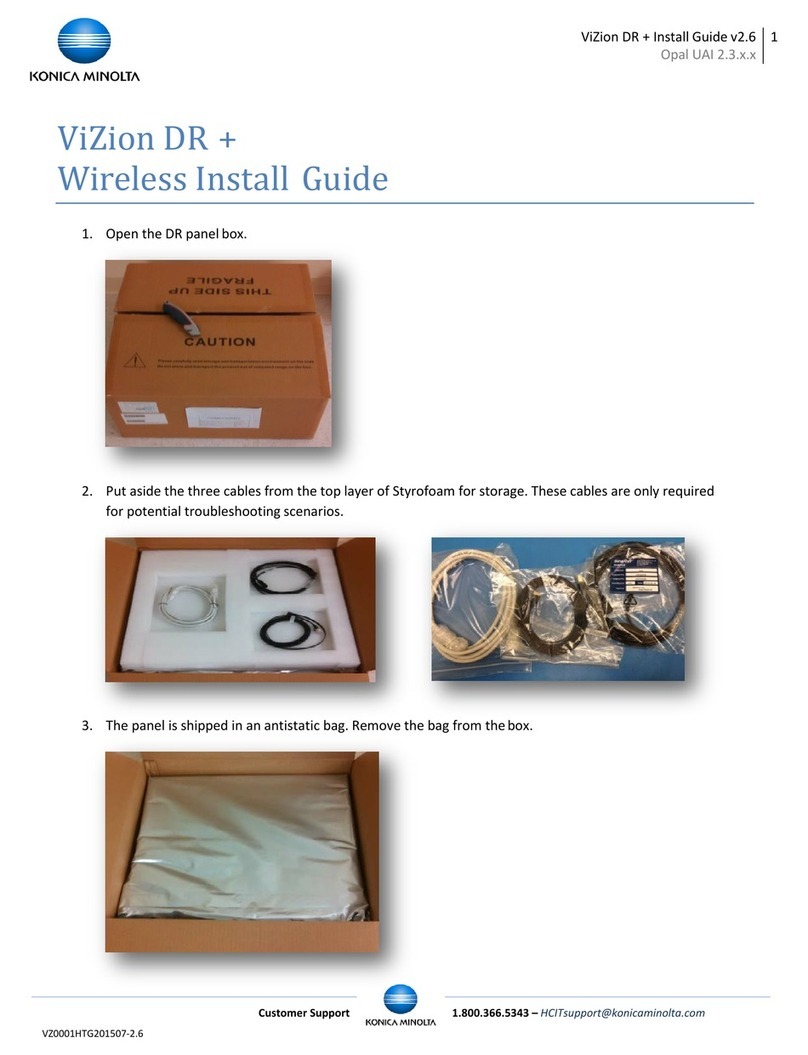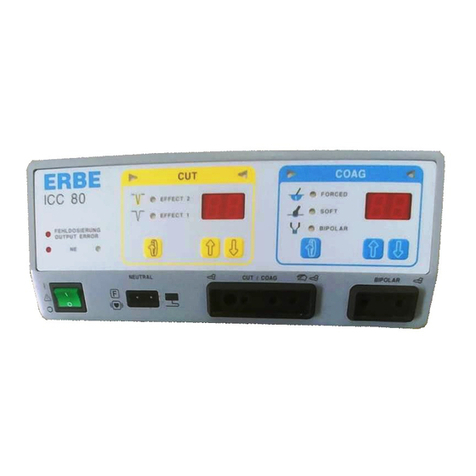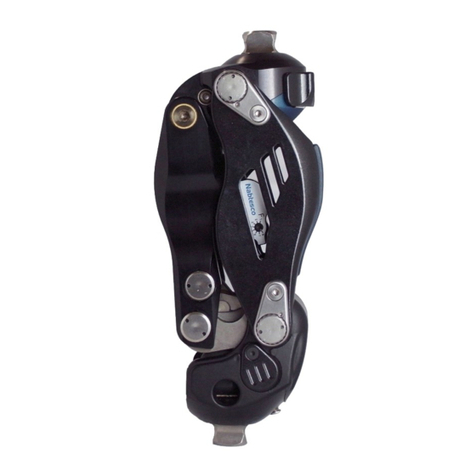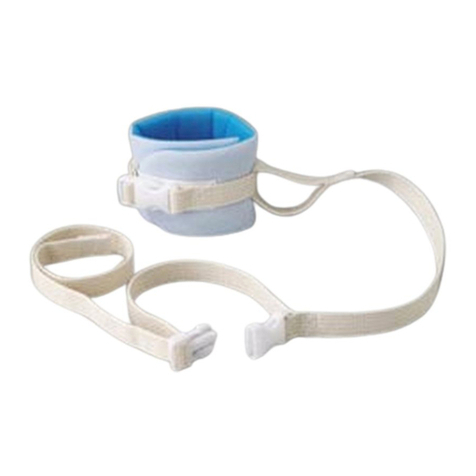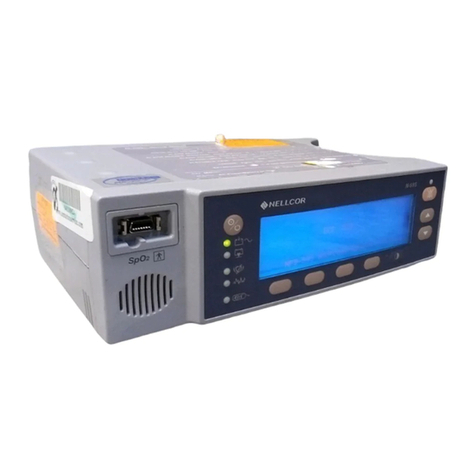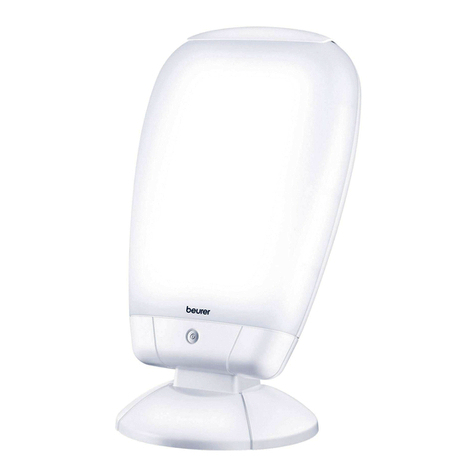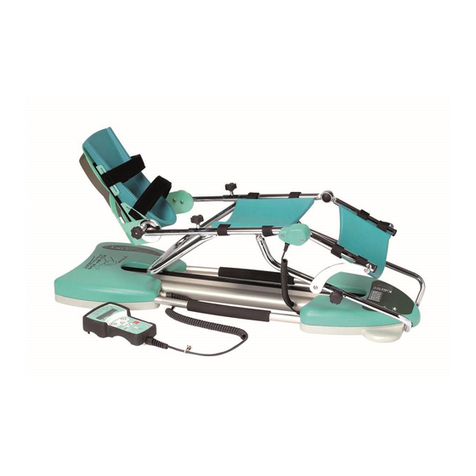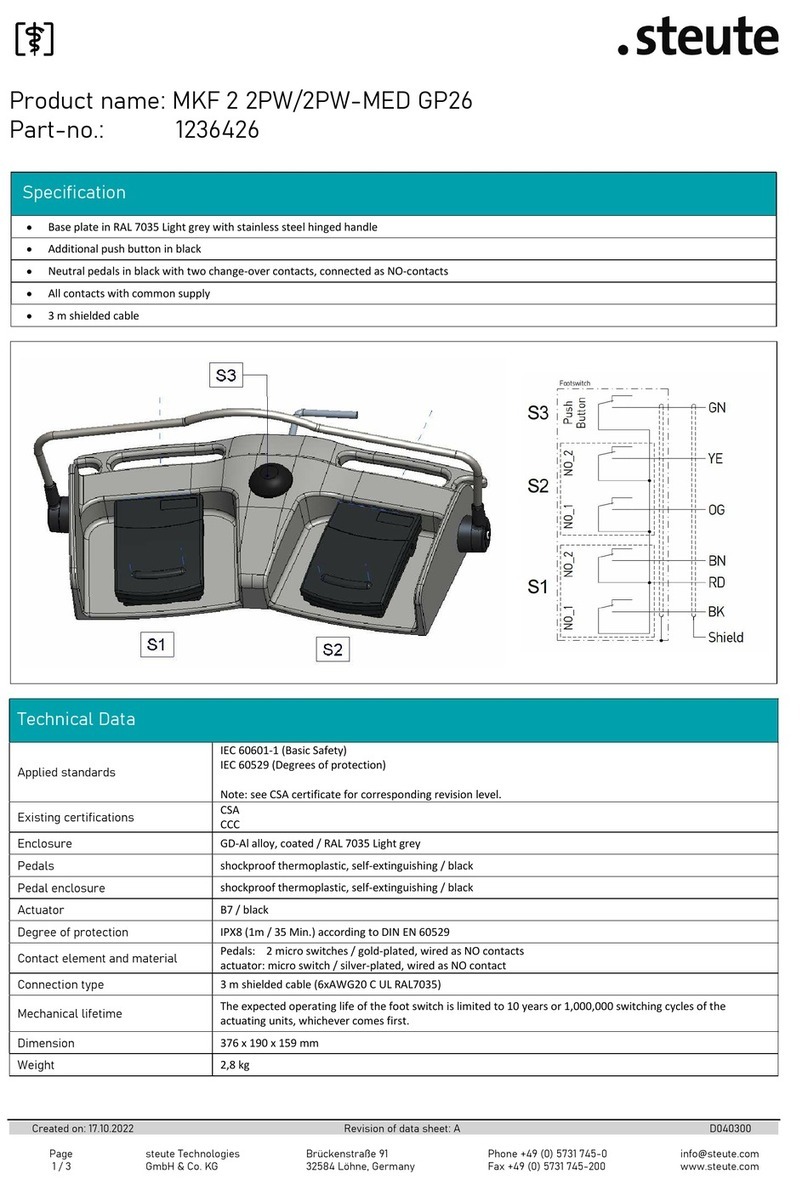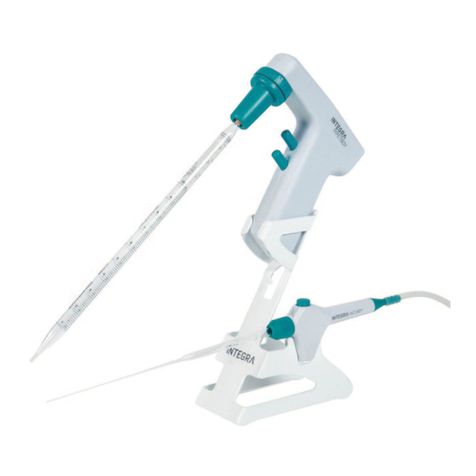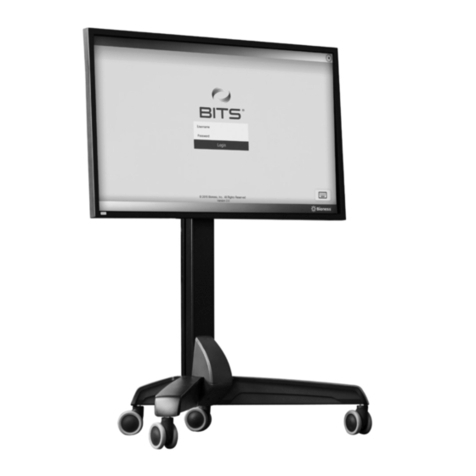Breg Polar Care 500 User manual

USAGE TIPS
1. Use cubed or chunked ice for optimal performance.
2. To make sure the pump can work eectively, keep the unit at
the same height as the pad or no more than two feet below. A
Polar Care Hanger is available upon request if needed to hang
the unit at the proper height.
3. To drain the pad between uses, hold it upright with the hose
pointed toward the ground. Depress the two black plungers
and allow the water to drain out of the pad.
4. You may disconnect the Polar Pad from the unit without
removing the pad from the aected area by depressing the
tabs on the hose coupling and gently pulling the hoses apart.
The Polar Pad and unit will seal itself and will not leak. Note:
Some dripping during release is normal.
CLEANING, MAINTENANCE, & SERVICE
After use, drain and dry pump with a soft cloth. Warm water and
mild detergent may be used occasionally to clean the pump and
tubes. There are no serviceable parts. Contact BREG Customer
Service if replacement parts are needed.
WARRANTY
BREG, Inc. warrants that this product is free from defects in
workmanship, materials, and tness for use for 180 days from initial
purchase under normal use for which it was intended if it has been
properly used under direct supervision of a licensed health care
practitioner. BREG, Inc.’s obligation under this warranty is limited
to the replacement or repair of any defective part or parts of this
product. All express or implied warranties, including the warranty
of merchantability and tness for a particular purpose, are limited
to the actual warranty period set forth above. No other warranty,
express or implied, is given and no armation of or by seller, by
words or action, will constitute a warranty.
120 VAC 60Hz 28 Watts
50°F to 100°F (10°C to 40°C)
-40°F to 158°F (-40°C to 70°C)
30 – 75% R.H.
10 – 100% R.H., non-condensing
700 hPa to 1060 hPa
Designed to conform to applicable
requirements of:
UL 60601-1, CSA C22.2 / No. 601.1
Class II, Continuous Operation.
Not suitable with ammable
anesthetics.
Electrical Specications:
Input
Environmental Requirements:
Temperature:
Operating
Transport & Storage
Humidity:
Operating
Transport & Storage
Atmospheric Pressure:
Standards Compliance:
Electrical Classications:
Physical and Electrical Specications
DISPOSAL
Dispose of product according to local regulations.
ELECTRICAL SAFETY
Like all electrical products, you must follow precautions to avoid
electrocution, re, burns, or other injuries. Supervise children and
invalids near this product to ensure that these precautions are
followed.
Keep electrical connections dry
Even though the Polar Care unit is designed to hold and pump
water, the electrical connections at the power outlet and from the
power cord to the Polar Care unit are not waterproof and must be
kept dry.
• Do not handle the transformer or electrical cord with wet hands.
• Always keep the unit in a place where the connections will not
fall into water (e.g., a tub, sink, etc.).
• Do not use outdoors.
If the electrical connections fall into water, do not touch any wet
part of the product. Unplug only at dry electrical connections.
Avoid ammables and oxidizers
Do not use in places with ammable vapors or gasses (for
example, ammable anesthetics), high oxygen concentrations or
other oxidizers (for example, Nitrous Oxide).
Use a grounded outlet
Connect this product to a properly grounded
outlet only.
Protect the power cord and transformer
• Keep the cord and transformer away from heated surfaces.
• Set up and use this equipment in a low trac location away
from children and pets.
Never operate this product if it has a damaged cord, transformer
or plug. If the cord, transformer or plug is damaged, unplug and
contact BREG Customer Service.
Start the product
Use only the transformer provided with the Polar Care 500®, BREG
P/N 6.00230 in order to meet the requirements of UL 60601-1.
With dry hands, plug the transformer into an electrical outlet.
Insert the opposite end of the plug into the electrical housing
receptacle located on the temperature regulator.
Unplug to stop the product when not in use
Unplugging the Polar Care unit turns it o. Always unplug
immediately after use. Never leave it plugged in while
unattended.
Electromagnetic Interference
This Polar Care unit may cause electromagnetic or other
interference with other electrical devices. To check whether the
Polar Care unit is interfering with another device, unplug the
Polar Care unit. If this corrects the problem, move the Polar Care
unit or other device, or use an outlet on a dierent circuit.
Grounded
Outlet
PRODUCT SPECIFICATIONS
Symbol Description
Type B, applied part.
Symbols used on the Polar Care 500
This is the safety alert symbol. It is used to alert you
to potential personal injury hazards. Obey all safety
messages that follow this symbol to avoid possible
injury or death.
TROUBLESHOOTING GUIDE
Pump not running
Water not owing to the pad
Temperature reading above 55˚ F
1. Check that the transformer is properly plugged into the unit
and the wall outlet.
2. Ensure ice and water are lled to the indicated level.
3. Check that there are no kinks in the pad.
4. Conrm the pump is completely submerged in the water.
5. Gently pull on the blue tube to make sure the tube/pad
junction is straight.
6. To help dislodge possible debris in the line, reverse the ow in
the pad by disconnecting the coupling and rotating one end
by 180°.
7. Remove the pad and ll it while pad is lying at; then reapply to
the patient.
8. Conrm that the unit is at the same height as the pad or no
more than two feet below.
9. Check that the pad couplings are securely attached to the unit.
Leaks
Note: Some condensation on the lines, controller, and pads is
unavoidable, especially in warmer climates.
1. If a leak exists (not condensation on the lines) disconnect the
pad couplings. Make sure the release clips on the couplings are
depressed before reconnecting the pad to the pump hose; then
conrm both sides of the coupling are properly clicked in.
2. If a leak is detected in the pad, stop using it and call BREG
customer service.
Excessive Noise
1. Check that the pump is completely submerged in the ice water.
2. Conrm that the pump is not resting against the sides or the
bottom of the unit. Use the included bowtie clip to prevent
this.
Broken Bowtie Clip
If the bowtie clip inside the Polar Care breaks, call BREG customer
service for a free replacement. You can still operate the unit by
fully submersing the pump in the unit.
Product #: 02020
Weight: 5 lb. (2.3 kg) Empty,
21 lb. (9.5 kg) Filled
Average Operating Range: ≥45°F (≥7.2°C)
Plug: 2.5 mm CTR. PIN POSITIVE
Thermometer Accuracy: +/- 2°F (1.1°C)
Power: 12 VDC 800 mA
BREG Inc.
Vista, CA 92081 U.S.A.
Telephone: (800) 321-0607
(760) 599-3000
Telefax: (800) 329-2734
AW-1.90028 REV B
500
AW-1.90028 REV B
Temp

PRODUCT INSERT
INFORMATION FOR
MEDICAL PROFESSIONALS
2. Apply Insulation Barrier and Polar Pad
Always use an insulation barrier (such as BREG Polar Dressing, Webril,
Kerlix, cast padding, elastic bandage) between the Polar Pad and skin.
Do not let any part of the Pad touch skin. If a sterile dressing has
been applied to the treatment site that does not completely cover the
skin under the pad, use an additional insulation barrier. The Pad alone
is too cold to be applied directly to the skin.
Use only BREG Polar Pads. Other pads may be colder, increasing the
risk of skin injury.
Do not cover the Polar Pad with dressing, wrapping, bracing, or casting
that prevents the patient from checking the skin under the Pad.
3. Provide Prescription and Instructions
The Polar Care 500 is classied by the FDA as a Class II medical
device that must be prescribed by a physician or licensed healthcare
practitioner. A proper prescription for use must include:
• Operating temperature range;
• Frequency and duration of use (and breaks if applicable);
• Frequency and instruction on skin inspections;
• Treatment Period.
Use the Physician Prescription Form on the other side of this
document. This document should be given to the patient (or caregiver)
upon discharge or transfer from the recovery room.
Common operating temperatures for patients without risk factors for
extended use (longer than 20 minutes) is 45° to 55°F (7.2° to 12.8°C).
Never prescribe temperatures below 45°F for longer than 20 minutes
per application. This can result in cold-related injuries, including full
thickness skin necrosis.
A variety of extended use continuous-ow cold therapy protocols
are reported in the literature. Treatment protocols vary based upon
specic patient conditions and health history, physician experience
with continuous-ow cold therapy application, and medical judgment.
See the Sample Cold Therapy Protocols to the right.
Tell patients how to inspect skin under the Polar Pad without
compromising the sterile site and how often to do so.
Instruct patients to stop using the Polar Care 500 and contact you
immediately if they experience any adverse reactions such as:
increased pain, burning, increased swelling, itching, blisters, increased
redness, discoloration, welts, or other changes in skin appearance.
Review all product information with your patient.
Review the Information for Patients and Medical Professionals in this
document, the Operating Instructions on the unit, and the Polar Pad
Fitting Instructions.
If the risk of cold-induced injury outweighs the benets of cold
therapy, do not prescribe the Polar Care 500. If you prescribe
this product to patients with risk factors, consider taking special
measures to control the risk, such as:
• Recommending more frequent skin checks.
• Requiring more frequent follow-up examinations.
• Prescribing higher temperatures or using a thicker insulation
barrier between the pad and skin.
• Prescribing shorter durations of application, less frequent
application, or eliminating nighttime application.
GUIDELINES FOR USE
1. Screen Patients for Contraindications and Risk Factors
Before prescribing cold therapy, always consider the patient’s medical
history, particularly any contraindications or risk factors. If not
appropriately prescribed, continuous-ow cold therapy can result in
serious cold-induced injury, including full thickness skin necrosis.
The Polar Care 500 can be cold enough to seriously injure skin.
Follow this information, the Operating Instructions (on the Polar
Care 500 lid), and the Polar Pad Fitting Instructions (provided with
each Polar Pad).
WARNING
• Pathologic sensitivity to cold.
• Behaviors that negatively eect
circulation, including poor
nutritional status,smoking and
tobacco use, excessive caeine
use, and excessive alcohol use.
• Patients with cold application
area desensitization due to local
anesthesia or regional nerve
blocks.
• Medications that have a
negative eect on peripheral
vascular circulation, including
beta adrenergic blockers and
local epinephrine use (such as
in local anesthetics).
• Medications that have a
negative eect upon mental
capacity.
• Excessive moisture at the
application site due to
excessive bleeding, sweating,
or condensation.
• Diabetes.
• Hand/wrist or feet/ankle surgery.
• Cognitive disabilities.
• Communication barriers.
• Young children and the elderly.
RISK FACTORS for Cold-Induced Injury
• History of cold injury, frostbite,
or adverse reactions to local
cold application.
• Patients that are incoherent due
to general anesthesia, sedation,
or coma.
• Application areas with
compromised local circulation
or potential wound healing
problems, including localized
compromise due to multiple
surgical procedures.
• Circulatory syndromes,
including Raynaud’s disease,
Buerger’s disease, peripheral
vascular disease, vasospastic
disorders, sickle cell anemia,
and hypercoagulable clotting
disorders.
• Local tissue infection.
• Hand/wrist or feet/ankle
surgery with polyneuropathy.
• Diabetic Polyneuropathy.
CONTRAINDICATIONS
Patients with any contraindications should not use Polar Care
INDICATIONS FOR USE
The extended use of continuous-ow cold therapy modalities, such as
the Polar Care 500, have been shown to have many benecial eects
following surgery. Continuous-ow cold therapy has repeatedly been
shown to decrease postoperative pain, swelling, inammation, and
narcotic use following a variety of surgical procedures, such as surgery
to the shoulder, knee, and back.
For a bibliography of extended
use continuous-ow cold therapy studies, contact BREG, Inc. at
760-599-3000.
Treatment
Period
Frequency /
Duration Temp. Skin Inspection
Day 1-3
Day 4-10
Day 11
and beyond
While asleep:
Continuous
While awake:
Continuous
While awake:
Cyclic:
1 hour on and
1 hour o
While asleep:
Continuous
45˚ - 55˚ F
45˚ - 55˚ F
45˚ - 55˚ F
45˚ - 55˚ F
45˚ - 55˚ F
Inspect skin under
pad every 1-2 hours
Periodically inspect
the skin under pad
Periodically inspect
the skin under pad
Upon waking
Treatment
Period
Frequency /
Duration Temp.
Skin Inspection
Day 1-30
Day 30
and beyond
45˚ - 55˚ F
45˚ - 55˚ F
45˚ - 55˚ F
Periodically inspect
the skin under pad
Periodically inspect
the skin under pad
Upon waking
Upon waking
While awake:
Cyclic:
1 hour on and
1 hour o
While asleep:
Continuous
As needed for
pain control:
Continuous for
1 hour intervals;
not to exceed
12 hours/day
Treatment
Period
Frequency /
Duration Temp.
Skin Inspection
Day 1-3
Day 4 to
suture
removal
(day 7-14)
45˚ - 55˚ F
45˚ - 55˚ F Periodically inspect
the skin under pad
While awake:
Continuous
While awake:
As needed for
pain control:
Continuous for
1 hour intervals;
not to exceed
12 hours/day
Inspect skin under
pad every 1-2 hours
While awake:
As needed for
pain control:
Continuous for
1 hour intervals;
not to exceed
12 hours/day
SAMPLE COLD THERAPY PROTOCOLS
The following protocols are examples of appropriate post-operative
extended (>20 minute application) continuous-ow cold therapy
for patients with no risk factors. This is not a comprehensive list
of treatment possibilities. Treatment protocols for extended
continuous-ow cold therapy may vary based upon specic patient
conditions and health history, physician experience with cold
therapy, and medical judgment.
While protocols may vary, the temperature for extended use should
not be below 45˚ F.
The Polar Care 500 has a cold application time up to 11 hours.
Accordingly, the unit does not need to be relled through the night.
PATIENT DISCHARGE PROTOCOL
Follow this protocol prior to discharging the patient from facility care
to home use.
1. Patient Screen. Screen the patient for any contraindications
and/or associated risk factors. If the patient has any
contraindications, do not dispense the Polar Care 500 to the patient.
If the patient has any associated risk factors, consult with the
licensed healthcare practitioner to determine the appropriateness
of application of the Polar Care 500 to that patient.
2. Instructions For Use. Instruct the patient on how to properly
use the Polar Care 500. Review the Operating Instructions axed
to the unit with each patient.
3. Prescription. Instruct the patient regarding the licensed
healthcare practitioner’s prescribed protocol (temperature,
frequency and duration of use, and, if applicable, breaks), frequency
and instruction on skin inspections, and treatment period.
4. Potential For Injury. Inform the patient that improper use
can result in serious skin injury, including necrosis. Emphasize
the importance of following the prescribed protocol, proper pad
application, and skin inspection.
The duration of a cyclic application may vary depending upon the
patient. If the patient does not experience pain relief, the physician
may increase the duration of application. As the application duration
is increased, the frequency of the skin inspections should increase.
5. Proper Pad Application. Instruct the patient that an
insulation barrier must be between the Polar Pad and skin during
use. No part of the Polar Pad should touch the skin for any period
of time.
6. Skin Inspection. Instruct the patient to inspect the skin
receiving cold treatment per the practitioner’s instructions,
typically every 1 to 2 hours. If dressing, wrapping, bracing, or
casting over the Polar Pad prevents the ability of the patient to
regularly perform skin checks under the pad, do not dispense
the Polar Care 500 to the patient.
7. Discontinue. Instruct the patient to stop using the Polar
Care 500 and contact their licensed health care practitioner
immediately if they experience any adverse reactions such as:
increased pain, burning, increased swelling, itching, blisters,
increased redness, discoloration, welts, or other changes in skin
appearance.
8. Documentation. Give the patient this document with the
Polar Care 500 Physician Prescription form lled out.
Skin Inspection
Skin Inspection
Sample Protocol 1
Sample Protocol 2
Sample Protocol 3
Other Breg Medical Equipment manuals
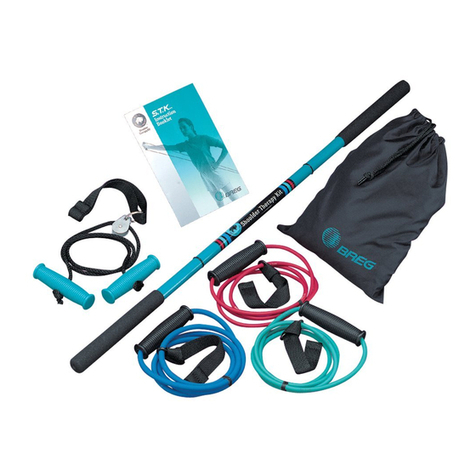
Breg
Breg S.T.K. Shoulder Therapy Kit User manual
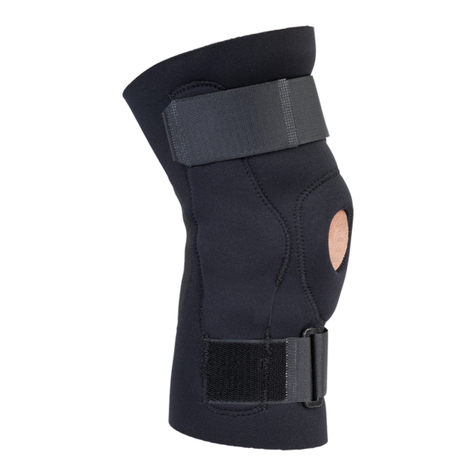
Breg
Breg 100628-020 User manual
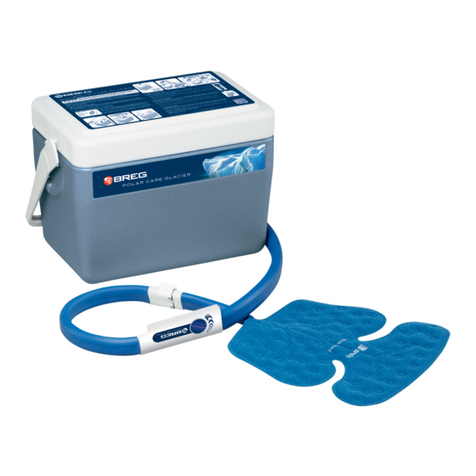
Breg
Breg Polar Care Glacier User manual
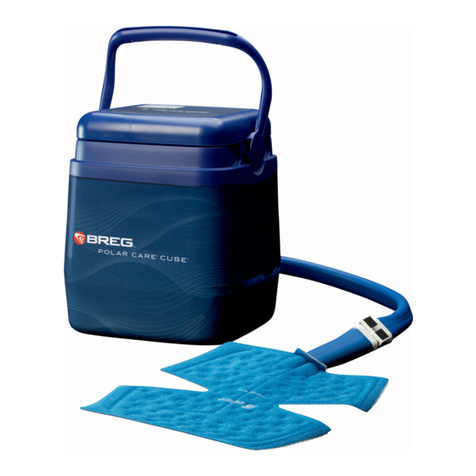
Breg
Breg polar care cube User manual
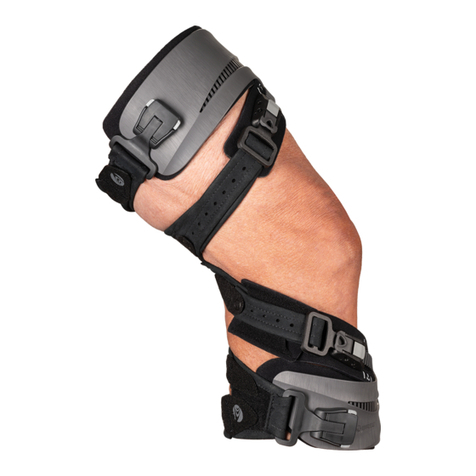
Breg
Breg Quantum User manual
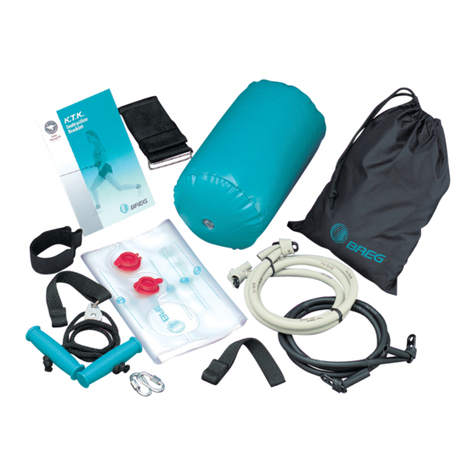
Breg
Breg K.T.K. User manual
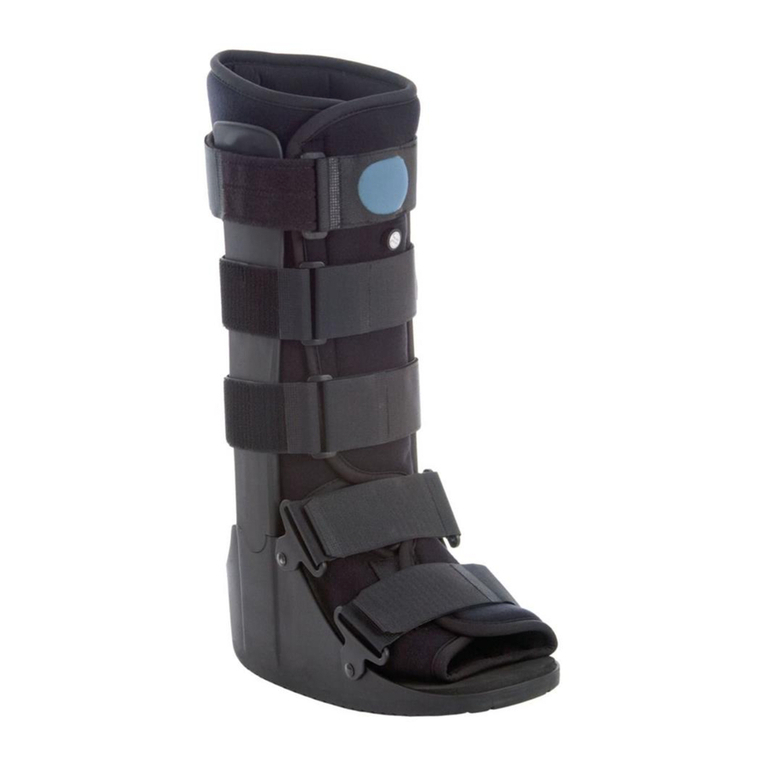
Breg
Breg Softgait Air User manual
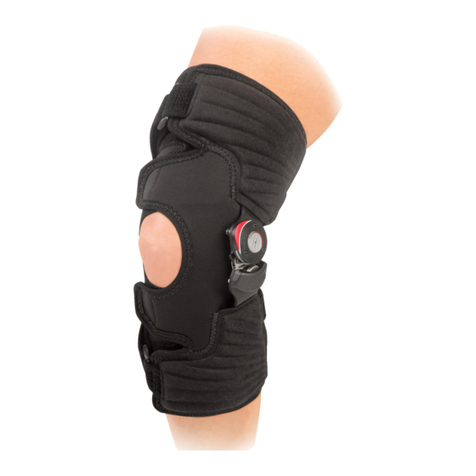
Breg
Breg OA IMPULSE User manual

Breg
Breg EPIC LP TLSO 456 User manual
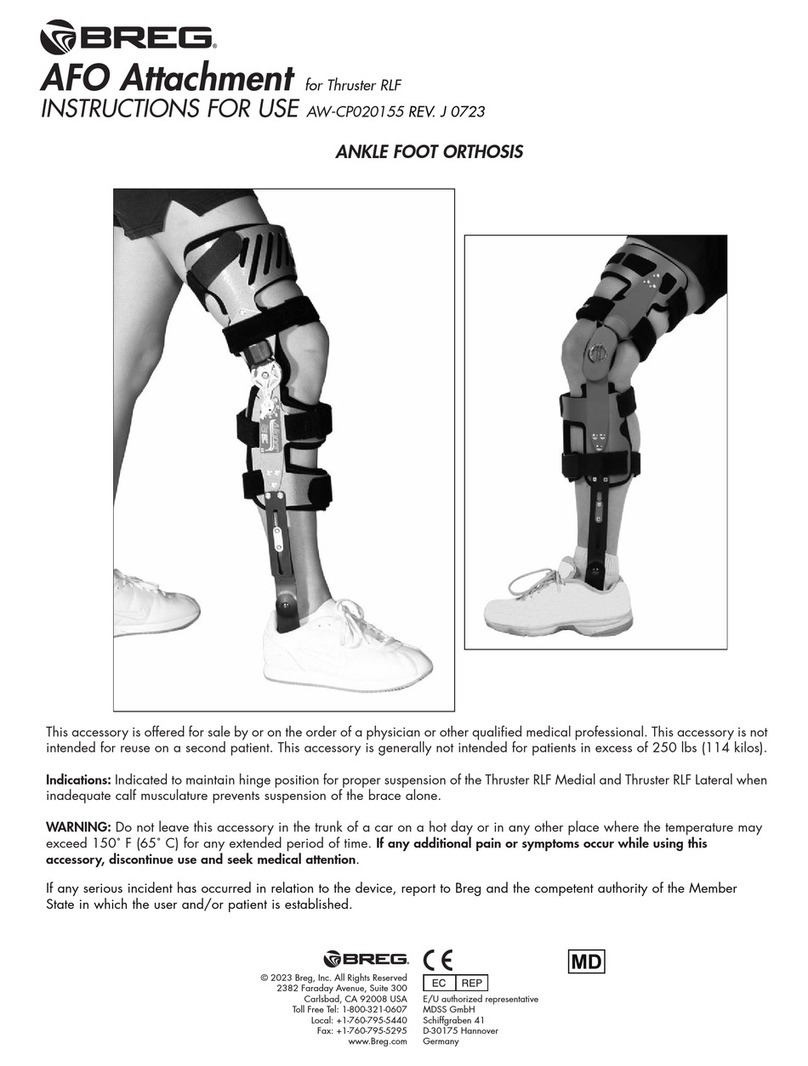
Breg
Breg AFO Attachment User manual

Breg
Breg Dorsal Night Splint User manual
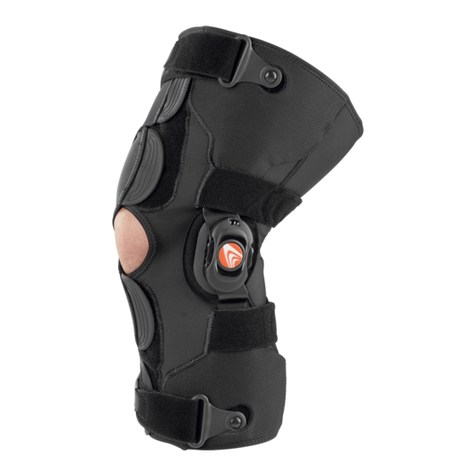
Breg
Breg Freestyle OA Brace User manual
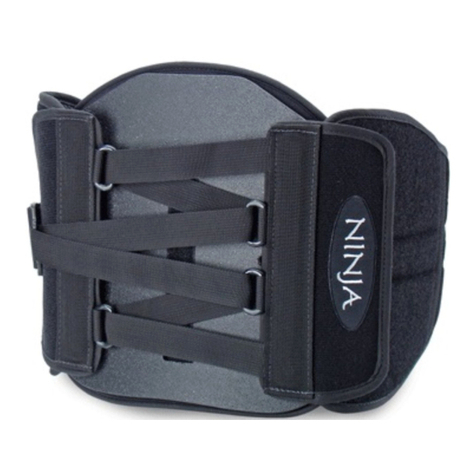
Breg
Breg NINJA User manual

Breg
Breg Tendon Strap User manual

Breg
Breg Polar Care 500 User manual
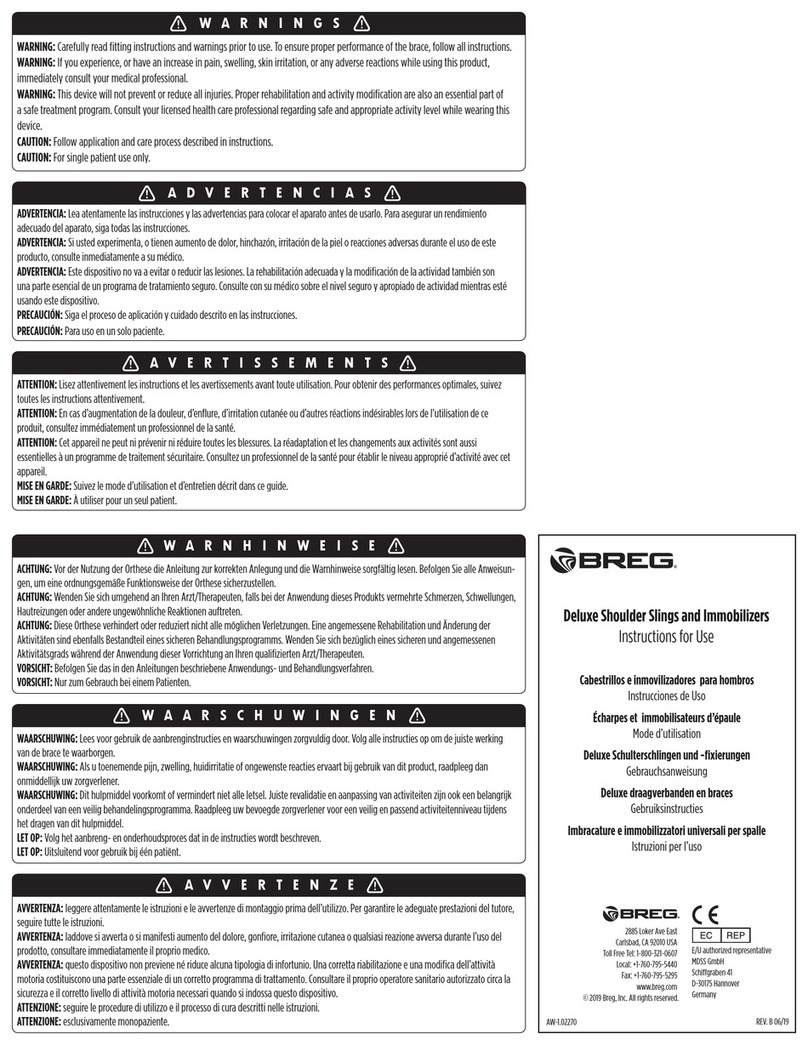
Breg
Breg Deluxe Shoulder Slings and Immobilizers User manual
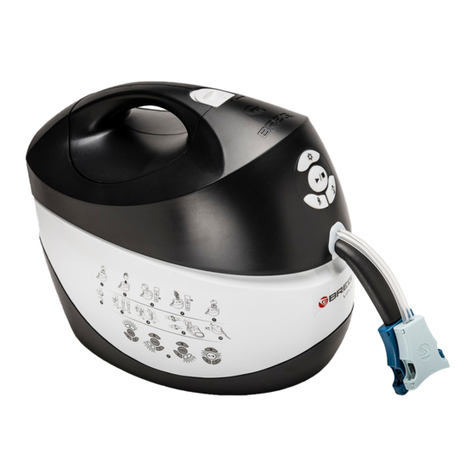
Breg
Breg VPULSE User manual
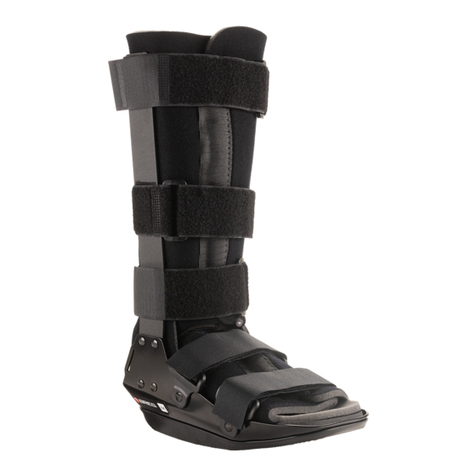
Breg
Breg Softgait Walker User manual
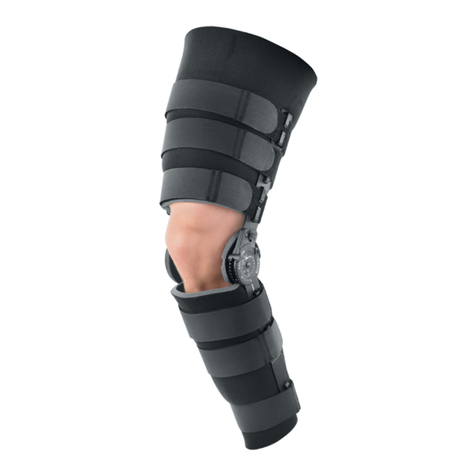
Breg
Breg PostOp User manual
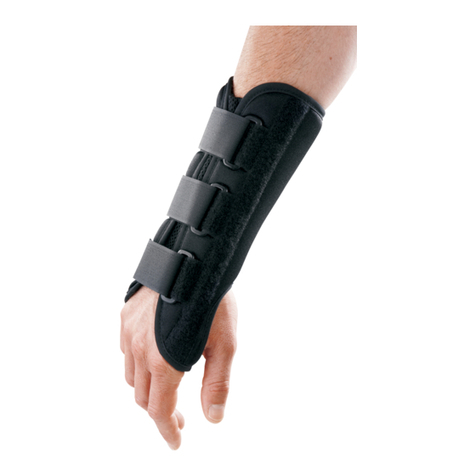
Breg
Breg Wrist Brace User manual
